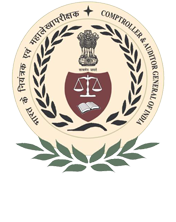Audit Reports

Goa
Report of 2009 - Compliance and Financial Audit on State Finance of Government of Goa
Overview
In response to the Twelfth Finance Commission's recommendations, the Goa Government enacted its Fiscal Responsibility and Budget Management Act, (FRBM), entitled the Goa Fiscal Responsibility and Budget Management Act, 2006, with a view lo ensuring prudence in fiscal management and fiscal stability by progressive elimination of revenue deficit, sustainable debt management consistent with fiscal stability, greater transparency in fiscal operations of the Government and conduct of fiscal policy in a medium-term fiscal framework. The State Government's commitment to earn forward these reforms is largely reflected in the policy initiatives announced in its subsequent budgets. The benefits of FRBM legislation have been realized to a great extent already, in terms of reduction in major deficit indicators.
The Comptroller and Auditor General of India's Audit Reports have been commenting upon the Government's finances for over two years since the FRBM legislation. Since these comments formed part of the Audit Report, it was felt that the audit findings on State finances remained camouflaged because the majority of audit findings were on compliance and performance aspects. The obvious fallout of this all-inclusive reporting was that the audit findings on financial management did not receive proper attention. In recognition of the need to bring State finances to centre-stage, a Stand-alone report on State Government finances was considered an appropriate audit response to this challenge. Accordingly, from the report year 2009 onwards, the Comptroller and Auditor General has decided to bring out a separate volume titled 'Report on State Finances'.
Based on the audited accounts of the Government of Goa for the year ending March 2009, this report provides an analytical review of the Annual Accounts of the State Government. The report is structured in three Chapters.
Chapter I is based on the audit of Finance Accounts and makes an assessment of the Goa Government's fiscal position as at 31 March 2009. It provides an insight into trends in committed expenditure and borrowing pattern, besides giving a brief account of Central funds transferred directly to State implementing agencies through the off-budget route.
Chapter II is based on audit of Appropriation Accounts and gives a grant-wise description of appropriations and the manner in which the allocated resources were managed by the sen ice deliv ery departments.
Chapter III is an inventory of the Government's compliance with various reporting requirements and financial rules. The report also has additional data collated from several sources in support of the findings.

